
A midge is any small fly, including species in several families of non-mosquito Nematoceran Diptera. Midges are found on practically every land area outside permanently arid deserts and the frigid zones. Some midges, such as many Phlebotominae and Simuliidae, are vectors of various diseases. Many others play useful roles as prey items for insectivores, such as various frogs and swallows. Others are important as detritivores, participating in various nutrient cycles. The habits of midges vary greatly from species to species, though within any particular family, midges commonly have similar ecological roles.
Thallium (81Tl) has 41 isotopes with atomic masses that range from 176 to 216. 203Tl and 205Tl are the only stable isotopes and 204Tl is the most stable radioisotope with a half-life of 3.78 years. 207Tl, with a half-life of 4.77 minutes, has the longest half-life of naturally occurring radioisotopes.

The minute black scavenger flies or "dung midges", are a family, Scatopsidae, of nematoceran flies. Despite being distributed throughout the world, they form a small family with only around 250 described species in 27 genera, although many await description and doubtless even more await discovery. These are generally small, sometimes minute, dark flies, generally similar to black flies (Simuliidae), but usually lacking the humped thorax characteristic of that family.
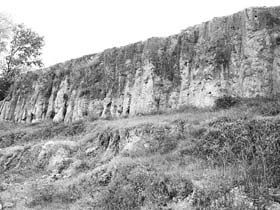
Bara is a village in Rupnagar District in Punjab, India. The village has mainly two Jatt Sikh surnames Chakkal and Heer and lies on the Rupnagar-Morinda Road at the left bank of a seasonal monsoon rivulet called Budki Nadi, about four kilometers south-west of the city Ropar and 40 km (25 mi) northeast of Chandigarh on National Highway 205 (India) (NH-205). Bara is the site of significant archeological excavations connected with the Indus Valley Civilization. It has some evidence of being home to a culture that was a pre-Harappan strand of the Indus Valley Civilization. Baran and Harappan cultures may have intertwined and coexisted in some places, such as Kotla Nihang Khan, also in modern-day Punjab.

The Window Gnat is a medium gnat (6–10 mm) of the family Anisopodidae. It is found in the Palearctic.
The Colombo Journal was a short-lived English-language bi-weekly newspaper in Ceylon. The newspaper started on 1 January 1832 with George Lee as editor. George Lee was the Superintendent of the Government Press and later Postmaster General. The newspaper had the support of the government and Governor Robert Wilmot-Horton. Apart from Horton and Lee other senior government officials who wrote for the newspaper included the governor's private secretary Henry Tufnell and George Turnour. Criticism of the British government led to the newspaper being closed by the Colonial Office on 31 December 1833.

Chaoborus flavicans is a species of fly in the family Chaoboridae. It is found in the Palearctic.

Chironomus anthracinus is a species of fly in the family Chironomidae. It is found in the Palearctic.
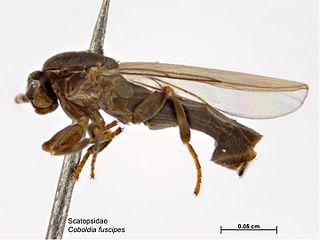
Coboldia fuscipes is a species of fly in the family Scatopsidae. It is found in the Palearctic.
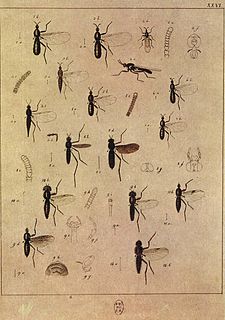
Scatopse notata is a species of fly in the family Scatopsidae. It is found in the Palearctic.
Apiloscatopse scutellata is a species of fly in the family Scatopsidae. It is found in the Palearctic.

Bibio johannis is a species of fly in the family Bibionidae. It is found in the Palearctic.

Bibio varipes is a species of fly in the family Bibionidae. It is found in the Palearctic.
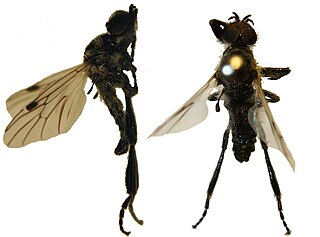
Bibio nigriventris is a species of fly in the family Bibionidae. It is found in the Palearctic.

Bibio longipes is a species of fly in the family Bibionidae. It is found in the Palearctic and the Nearctic.

Bibio leucopterus is a species of fly in the family Bibionidae. It is found in the Palearctic.
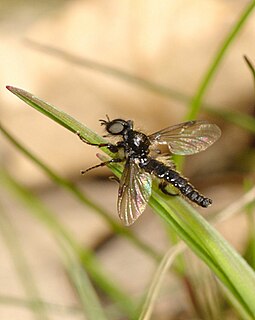
Bibio lanigerus is a species of fly in the family Bibionidae. It is found in the Palearctic.
Bibio reticulatus is a species of fly in the family Bibionidae. It is found in the Palearctic.
Bibio venosus is a species of fly in the family Bibionidae. It is found in the Palearctic.
Ectaetia is a small genus of minute black scavenger flies. Known species are found in the Nearctic, Palearctic, Oriental, and Neotropical biogeographic realms. Adults of Ectaetia species are generally shiny and black, up to 7 mm long.















